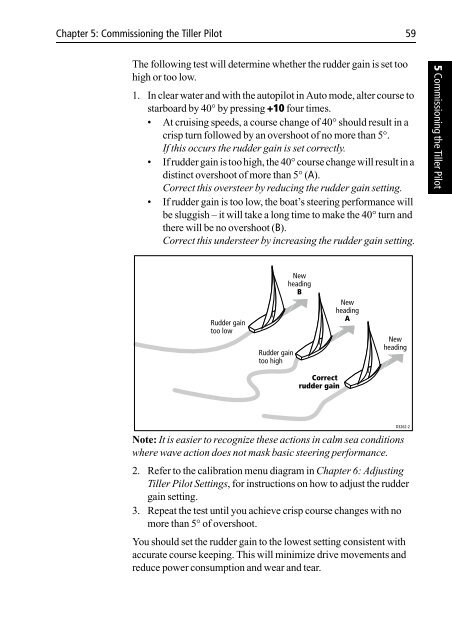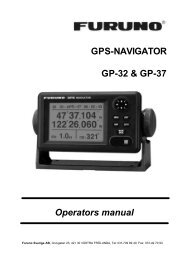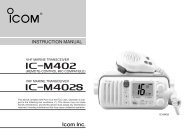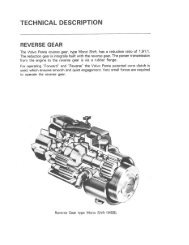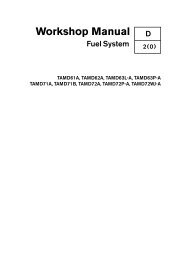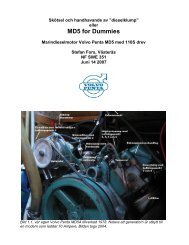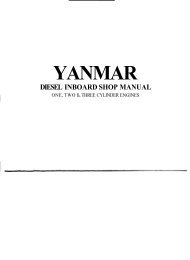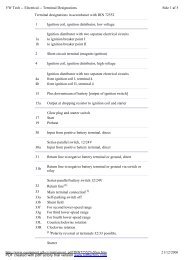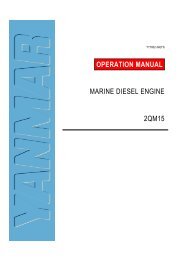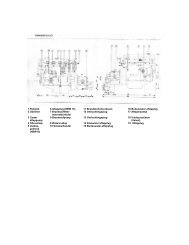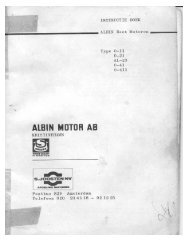AutoHelm ST 2000 Plus - Comcast.net
AutoHelm ST 2000 Plus - Comcast.net
AutoHelm ST 2000 Plus - Comcast.net
- No tags were found...
Create successful ePaper yourself
Turn your PDF publications into a flip-book with our unique Google optimized e-Paper software.
Chapter 5: Commissioning the Tiller Pilot 59The following test will determine whether the rudder gain is set toohigh or too low.1. In clear water and with the autopilot in Auto mode, alter course tostarboard by 40° by pressing +10 four times.• At cruising speeds, a course change of 40° should result in acrisp turn followed by an overshoot of no more than 5°.If this occurs the rudder gain is set correctly.• If rudder gain is too high, the 40° course change will result in adistinct overshoot of more than 5° (A).Correct this oversteer by reducing the rudder gain setting.• If rudder gain is too low, the boat’s steering performance willbe sluggish – it will take a long time to make the 40° turn andthere will be no overshoot (B).Correct this understeer by increasing the rudder gain setting.5 Commissioning the Tiller PilotRudder gaintoo lowRudder gaintoo highNewheadingBNewheadingANewheadingCorrectrudder gainD3262-2Note: It is easier to recognize these actions in calm sea conditionswhere wave action does not mask basic steering performance.2. Refer to the calibration menu diagram in Chapter 6: AdjustingTiller Pilot Settings, for instructions on how to adjust the ruddergain setting.3. Repeat the test until you achieve crisp course changes with nomore than 5° of overshoot.You should set the rudder gain to the lowest setting consistent withaccurate course keeping. This will minimize drive movements andreduce power consumption and wear and tear.


